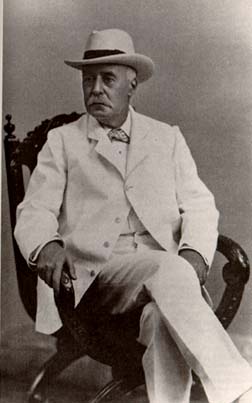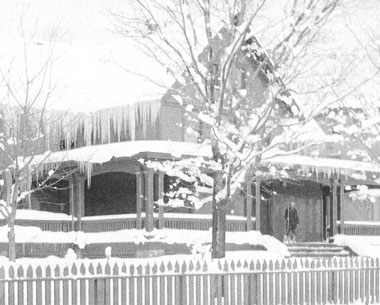History

It was the year 1903. Calumet, Michigan was one of the largest cities in the state; and by far, the wealthiest. People from all over the world had immigrated to Calumet to mine copper from the richest, purest, mother of all lodes-The Calumet Conglomerate. The Calumet and Hecla Mining Company was producing half the nation’s copper and had paid out nearly $60 million in dividends during the preceding 14 years. Under the direction of Alexander Agassiz, the C&H surface plant was deemed the most efficient in the nation, and the Red Jacket shaft, at more than 8,000 feet deep, was the deepest in the world. The local economy was booming, and more money was made here than in the California and Alaska gold rushes combined. In less than a century of its mining activity, the Calumet and Hecla Mining Company produced in excess of 4.5 billion pounds of refined copper and issued over $200 million in shareholder dividends.
It was during the peak of this prosperity, on July 1, 1903, that The Miscowaubik Club was born. Named for the Native American term for Red Metal, the Miscowaubik Club was established for “the encouragement of athletic exercise and the establishment and maintenance of places for reading rooms and social meetings.” Built and equipped with the “most modern and exquisite taste,” it was a gathering place for wealthy men-mining captains, merchants, bankers and lawyers. These privileged few enjoyed the finest amenities and luxuries of the day-large and very elegant billiard, dining, reception, card, and bath rooms; lawn tennis; indoor golf; world class cuisine; and impeccable service.
In the broader spectrum of life in the early 1900s, the Miscowaubik Club served as an icon to a mighty and powerful company that not only controlled the workings of the mines, but also exercised control over community development; the lives of the workers, and their families. Many firsts were introduced as an indirect result of the company’s prosperity. Electric distribution, indoor plumbing, central heating, telephone and telegraph service, mass transportation, and other such infrastructure amenities were introduced to the Keweenaw Peninsula much earlier than many larger cities in the state. The building of churches, libraries, schools, and hospitals was either subsidized or funded primarily by the mining company.

As every miner knows, each skip load of ore hoisted to the surface means one less skip load below, and one skip load closer to the inevitable depletion of the resource. The sharp decline in mining activity following the infamous strike of 1913, the collapse in copper prices during the great depression, and the inevitable exhaustion of the mineral deposits, signaled the end of the great copper boom on the Keweenaw. Yes, the mineral lode has been mined. But unlike the Keweenaw’s many western ghost town counterparts, left with dilapidated temporary structures decaying in the dusty barren plain; the Keweenaw remains lush and vibrant, still rich with an abundance of natural resources-miles of pristine shoreline, acres of untouched wilderness, and an abundance of wildlife. The crisp clean air and the crystal clear waters of Lake Superior enhance the beauty of all four seasons, making the Keweenaw an idyllic playground for all types of year-round outdoor recreation.
Today, The Miscowaubik Club embarks on its second century of continuous operation. Located in the epicenter of Keweenaw National Historic Park, the grand old club stands as an icon to the rich mining history that once dominated the land. Today, members and their guests still enjoy the same facilities, privileges, world-class cuisine, and service enjoyed during the prosperous copper boom. The dining experience offered at the club today is unique to the Keweenaw, and among the finest in the state. Although membership or a guest pass is required to receive dining or beverage services, the club welcomes interested travelers to visit the club during normal business hours.
